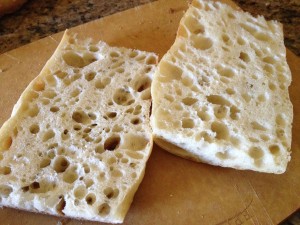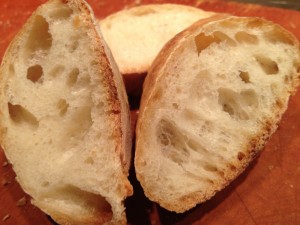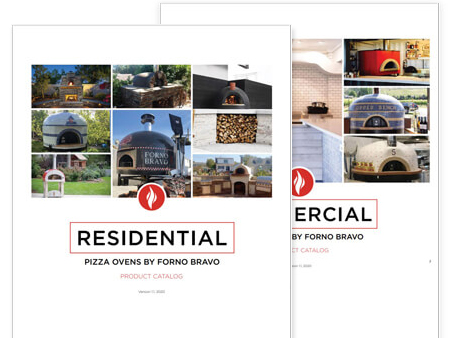Water and Dough Structure
May 29, 2012Posted by Forno BravoI have been experimenting with baguettes recently, including different approaches to fermentation time, better folding techniques, improved methods for loaf shaping, scoring, placement in the oven and steam.
Now I am going to start trying to hone in on the optimal hydration for my flour of choice and my oven—Trader Joe’s All Purpose Wheat flour and a Presto pizza oven.
As a general rule, wetter (higher hydration) doughs produce bread that is chewier and has a well developed, moist crumb with nice air holes. But reading various break cookbooks and web sites, there is not universal agreement on exactly what constitutes a high hydration dough, and what the proper hydration levels are for a traditional French baguette. Some experts say that 60% hydration is enough, while others will note that 60% might work in France, where the wheat is softer and has a lower gluten content and it absorbs less water, making that relatively low hydration level appropriate.
At the same time, I have been working at the other end of the spectrum—with a wetter 80% dough recipe recently, and the results have been very telling. Simply put, my baguettes are too flat. No matter how hard I try to develop the dough structure to enable my loaves to hold a round shape, and even though I am now using a couche to hold my loaves upright while they doing their final proofing (and a baguette flipping board)—my baguettes are just too flat. While the crumb is very good, I don’t like the shape. Equally, while crust is good, it veers toward chewy, rather than that light and airy crunch that I like in a baguette.
I was talking with our teenage daughter about the dynamic between water and dough strength, and we came up with an analogy of a thin water balloon with too much water—it just bulges out. Gravity tries to flatten the wetter, heavier dough, while the gluten network in the dough struggles to hold the loaf in shape. And with an 80% formula using AP flour, there just isn’t enough structure.
Put another way, 80-odd% hydration is the range typically seen in a ciabatta, a free-form Italian loaf with big holes and a chewy crust. With no hope of holding a formed loaf shape, the baker simply lays it out like a dog bone shaped puddle of dough.
So there we have it. I believe that 60% is too dry to give me the crumb development that I want, and I am convinced that I won’t be able to make the style of baguette that I want at 80%. I guess it’s time to learn what the sweet is for my conditions, my flour and my oven.
It sounds like fun.







